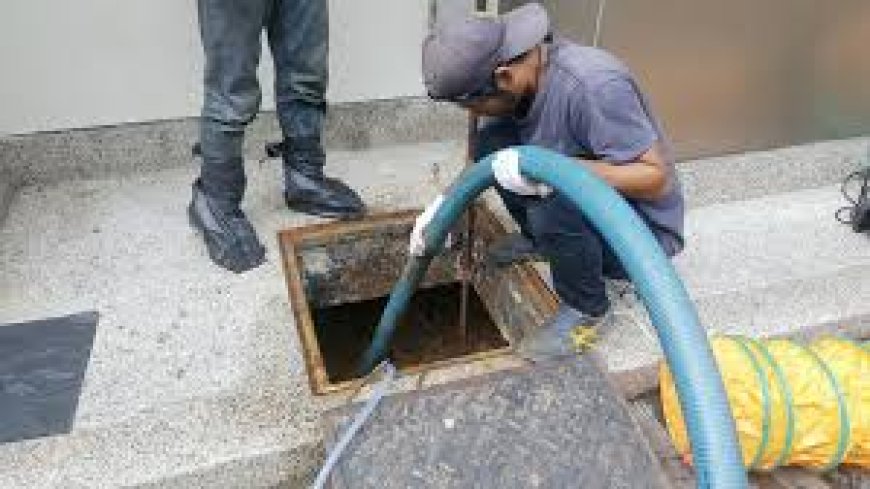The Cost of Neglect: How Ignoring Grease Trap Maintenance Can Hurt Your Business
Running a successful food establishment involves more than just serving delicious meals and providing excellent customer service

Running a successful food establishment involves more than just serving delicious meals and providing excellent customer service. Behind the scenes, many operational elements must be managed to ensure smooth and compliant business operations. One often overlooked but critical component is grease trap maintenance. Neglecting grease trap maintenance can lead to significant issues that can hurt your business financially, operationally, and reputationally. In this blog, we’ll explore the consequences of ignoring grease trap maintenance and why it’s essential to stay on top of this vital task.
Understanding Grease Traps
Grease traps are devices installed in commercial kitchens to intercept fats, oils, and grease (FOG) from wastewater before it enters the sewer system. They work by slowing down the flow of wastewater, allowing FOG to cool and solidify. The solidified grease floats to the top, while the heavier food particles settle at the bottom, and the cleaner water exits into the sewer system. Over time, grease traps accumulate FOG and need regular cleaning to function properly.
The Consequences of Neglecting Grease Trap Maintenance
- Clogged Drains and Plumbing Issues
One of the most immediate and noticeable effects of neglecting grease trap maintenance is clogged drains. When grease traps become full and are not cleaned regularly, FOG can overflow into the plumbing system, leading to blockages. Clogged drains can cause water to back up into the kitchen, creating unsanitary conditions and potentially halting kitchen operations. The cost of emergency plumbing repairs can be substantial, especially if the clog is severe and requires extensive work.
- Foul Odors
A neglected grease trap can produce foul odors that permeate the kitchen and dining areas. The buildup of FOG, food particles, and bacteria in the grease trap creates a breeding ground for unpleasant smells. These odors can be off-putting to both customers and staff, negatively impacting the dining experience and employee morale. Persistent foul odors can lead to a decline in customer satisfaction and repeat business.
- Health and Safety Violations
Food establishments are subject to strict health and safety regulations. Neglected grease traps can become breeding grounds for harmful bacteria and pests, posing significant health risks. Health inspectors can issue citations and fines for violations, and in severe cases, they may even shut down your establishment until the issues are resolved. Maintaining a clean and functional grease trap is crucial for ensuring compliance with health and safety standards and avoiding costly penalties.
- Environmental Impact and Fines
Improperly maintained grease traps can lead to FOG entering the municipal sewer system, causing environmental damage. FOG can clog public sewer lines, leading to overflows and contamination of local waterways. Municipalities impose strict regulations on grease trap maintenance to prevent such occurrences. Failure to comply with these regulations can result in hefty fines and legal action. Additionally, the negative environmental impact can damage your business’s reputation within the community.
- Increased Operating Costs
Ignoring grease trap maintenance can lead to increased operating costs in several ways. Emergency plumbing repairs, fines for health and safety violations, and environmental penalties can quickly add up. Additionally, the need for frequent cleaning and repairs due to neglected grease traps can strain your budget. Regular maintenance, on the other hand, can help prevent these issues, reducing the need for costly emergency interventions and ensuring more predictable operating expenses.
- Reduced Equipment Lifespan
Neglecting grease trap maintenance can also affect the lifespan of your kitchen equipment. FOG buildup can cause corrosion and damage to plumbing and kitchen appliances. For example, grease-laden water can damage dishwashers, sinks, and drainage systems, leading to expensive repairs or replacements. Regular grease trap maintenance helps protect your equipment, ensuring it operates efficiently and lasts longer.
- Loss of Business Reputation
In today’s competitive market, maintaining a positive reputation is crucial for the success of any business. Neglecting grease trap maintenance can lead to negative reviews and word-of-mouth publicity. Customers who experience foul odors, unsanitary conditions, or poor service due to operational disruptions are likely to share their negative experiences online and with others. This can result in a loss of customers and damage to your business’s reputation, which can be challenging to rebuild.
The Benefits of Regular Grease Trap Maintenance
- Smooth Operations:
- Regular grease trap maintenance ensures that your kitchen operates smoothly without interruptions caused by clogged drains or equipment failures.
- Cost Savings:
- Preventive maintenance reduces the likelihood of expensive emergency repairs, fines, and equipment replacements, leading to significant cost savings over time.
- Compliance:
- Staying on top of grease trap maintenance helps ensure compliance with health, safety, and environmental regulations, avoiding costly penalties and legal issues.
- Improved Hygiene:
- A clean and properly maintained grease trap contributes to a more hygienic kitchen environment, enhancing food safety and overall cleanliness.
- Enhanced Reputation:
- Providing a pleasant dining experience free from foul odors and disruptions helps maintain a positive reputation and encourages repeat business.
Implementing a Grease Trap Maintenance Plan
To avoid the costly consequences of neglecting grease trap maintenance, it’s essential to implement a regular maintenance plan. Here are some steps to consider:
- Regular Inspections:
- Schedule regular inspections to monitor the condition of your grease traps and identify any issues early.
- Scheduled Cleaning:
- Establish a routine cleaning schedule based on the volume of FOG your establishment produces. High-volume kitchens may require more frequent cleaning.
- Professional Services:
- Consider hiring professional grease trap cleaning services for thorough and efficient maintenance. Professionals have the expertise and equipment to ensure proper cleaning and compliance.
- Staff Training:
- Train your staff on the importance of grease trap maintenance and proper disposal practices to prevent FOG from entering the plumbing system.
- Record Keeping:
- Maintain records of all inspections, cleanings, and maintenance activities to demonstrate compliance with regulations and track the effectiveness of your maintenance plan.
Conclusion
Ignoring grease trap maintenance can have severe consequences for your business, including clogged drains, foul odors, health and safety violations, environmental fines, increased operating costs, reduced equipment lifespan, and damage to your reputation. Implementing a regular grease trap maintenance plan is essential to ensure smooth operations, cost savings, regulatory compliance, improved hygiene, and a positive reputation. By staying proactive and diligent in maintaining your grease traps, you can protect your business from the costly impacts of neglect and ensure long-term success.
What's Your Reaction?

























